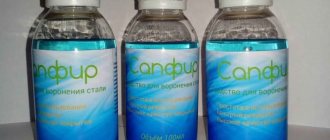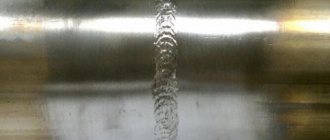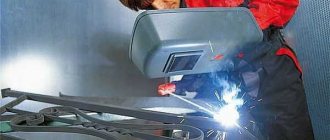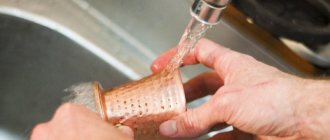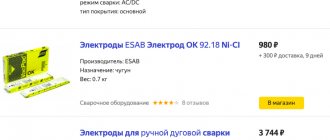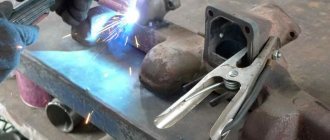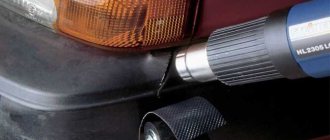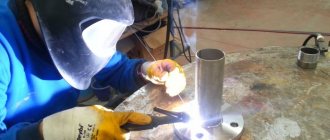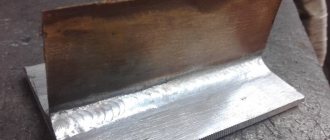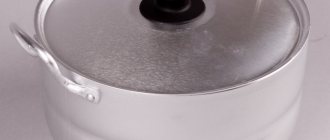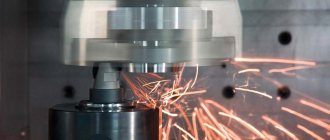Zero corrosion, durability and excellent appearance of stainless steel items make it the most popular metal in any industry - from heavy industry to small household needs. Its advantages cover a huge headache - the complexity of welding.
You can get rid of headaches, but you need to work hard to get rid of them. You can weld stainless steel, you just need to understand the technology of welding stainless steel with electrodes. Stainless steel electrodes are the main solution to the problem of low welding qualities of stainless steel.
What is stainless steel
What is steel: it is an alloy of iron and carbon. The proportion of carbon can be different; the higher it is, the stronger the steel. Alloying elements are added to steel to adjust the properties of the steel.
What is stainless steel: Chromium is added to resist corrosion. Its share in the stainless alloy ranges from 12 to 30%. There is much less chromium and other components such as molybdenum, nickel, etc.; they work great for anti-corrosion protection, but do not facilitate the welding process at all. And that's putting it mildly. High-alloy stainless steel is one of the most difficult metals to weld.
Diagram of the occurrence of a welding arc.
Here are the main factors influencing the welding process:
- Stainless steel has lower thermal conductivity than other types of steel. Therefore, it takes much longer to warm it up, and much more electricity is wasted.
- Stainless steel has a very high coefficient of expansion , so when connecting two surfaces of thick workpieces, there is a risk of microcracks occurring in large numbers. To minimize this problem, the gap between the workpieces must be wider than when working with other types of steel.
- The high resistance of stainless steel to melting processes leads to significant overheating of the electrodes. Therefore, you can only use special electrodes for stainless steel.
- Attention! The main enemy in welding steels is intergranular corrosion or ICC - a very dangerous deformation that can occur when stainless steel is heated above 500°C, therefore the welding mode must be determined most carefully, including forced cooling of steel workpieces.
Is it possible to cook stainless steel with conventional electrodes? Theoretically and even technically possible. But only when working with small metal parts for household use.
If we are talking about industrial structures, then no simple consumables! There is no need to talk about the reliability and solidity of seams using them. This option can only be regarded as an emergency solution in cases of urgent need.
Welding technology
Work with stainless steel is carried out using a technology that differs from welding conventional steel. The process includes:
- Cleaning the surface from oil and other debris and paint. The ingress of these substances will excessively foam the weld pool.
- Edge cutting is performed when working with metal thicker than 4 mm. A bevel is made at 45 degrees and a gap of 1 mm is set. When connecting parts of smaller thickness, the edges are not cut and no gap is provided. Tightly pressed plates will ensure a beautiful seam and prevent drips on the back side.
- For critical connections, it is recommended to calcinate the electrodes at a temperature of 170 degrees.
- When stainless steel is thicker than 7 mm, it is worth preheating the parts to be welded to 150 degrees. This will avoid sudden temperature changes.
- After applying the tacks, the seam is made with an electrode at an angle of 45-60 degrees towards itself or to the side. The weld pool is characterized by thickness, which is very different from welding low-carbon steel. Forming a seam is reminiscent of modeling from well-heated plasticine. You need to get used to this. The arc should be short and without oscillatory movements.
- The weld should be made a little faster than with conventional welding. This will help avoid overheating of the surface and preserve the properties of stainless steel.
- After finishing work, you cannot water the product due to its expansion coefficient. The metal should cool on its own.
https://www.youtube.com/watch?v=Zngv3j_zH4g
Classification of special purpose electrodes
There are many criteria for classifying consumables, and this review does not aim to outline all possible types and classes. We are interested in stainless steel electrodes for high-alloy special alloys. Here's where they belong:
Electrodes by purpose
- for low-alloy carbon alloys, names begin with the letter “U”;
- for alloy steels with the initial letter “L”;
- for alloyed heat-resistant steels with the letter “T”;
- for high-alloy steel alloys with special properties with the letter “B”;
- for surfacing surfaces with special properties, letter “N”.
Types of coating and labeling standards.
We may also be interested in the classification of electrodes by type of coating (for more details on coatings, see below):
- A – acidic coatings;
- B – basic coatings;
- C – cellulose;
- R – rutile;
- mixed and other types of coatings.
The principles of marking electrodes on stainless steel are quite cumbersome. There is no purpose in this review to list them in full.
Weld protection
Stainless steel is highly sensitive to mechanical cleaning after completion of the welding process. Cleaning involves removing the top oxidized layer, which is precisely intended to protect the weld from rusting. The oxidized layer is restored only after 5-6 hours. It is important that during this time nothing gets into the stripping zone, which is most often simply impossible. But there is one way to help deal with this problem. After mechanical cleaning is completed, it is necessary to coat the steel with a special spray, which consists of passivating additives and synthetic oils.
To summarize, we can come to the conclusion that the strength and quality of welds when welding stainless steel depends only on the person performing the work. If you approach all requirements with full responsibility and follow all recommendations, the result will meet your expectations. Therefore, it is important to carry out the welding technology in detail, choose a good inverter and buy high-quality electrodes.
Stainless steel welding methods
Options for welding steel alloys can also be classified in any way - according to a variety of criteria.
This review discusses types that are divided either by welding method or by type of workpiece:
- manual electrode welding;
- manual and semi-automatic welding with argon;
- inverter welding;
- welding steel with dissimilar metals;
- welding of stainless steel pipes;
- welding of thin steel, etc.
Properties of stainless steel
Stainless steel has a low heat conductivity coefficient. Therefore, during welding work, heating of the local area is required to form a uniform seam. To achieve the required technical characteristics, it is necessary to install high currents on the welding machine.
To prevent overheating or scale, it is necessary to make a larger gap when joining parts than in the case of welding steel workpieces. The seam absorbs significant deformation loads during the cooling process, due to which the main structural elements maintain their geometry.
A welding electrode with a specially selected composition for specific alloys avoids overheating of the main rod. That is, the resistance of the metals is approximately the same, due to which there is no overheating process.
Manual electrode welding
Types of joints when welding stainless steel.
The most universal technology that is used in almost any industry. One of the few ways to work with stainless steel available to amateur home craftsmen. The current must be constant, the polarity must be reversed.
The advantages of the manual method are serious and very convincing:
- high quality seams;
- compactness and high mobility of the device;
- availability of equipment and consumables at a price;
- high labor productivity;
- accessibility of the method for independent study and execution.
The most important condition for high-quality welds in stainless steel is the correct choice of welding materials.
The brands of electrodes for manual welding of stainless steel are as follows:
- OZL-8 are designed for work in aggressive environments.
- NZh-13 is very good for reliable seams with the prevention of ICC (intergranular corrosion). The peculiarity of this type is that the slag falls off on its own after cooling. And this makes the process speed much higher.
- Attention! Popularity Champions! Welding electrodes TsL-11 are characterized by excellent insulation of the weld pool from unnecessary exposure to the external environment. The connection is very strong and resistant to MCC.
Which electrodes to choose for stainless steel
The risk of cracking will be reduced if you choose an additive with a rod that is similar in chemical composition to the workpiece. Several types of rods are produced for welding stainless steel:
- TsL-11 was created for welding chromium-nickel alloy, they have a fluorine-carbonate coating, welding can be performed at temperatures up to +450°C. The electrode can be used in any position.
- OZL-6 is intended for heat-resistant steels; if you cook other workpieces with it, the electrode will straighten out more slowly and the weld will be weak;
- NZh-13 – for food grade stainless steel. Can be used for chromium-nickel steel alloyed with molybdenum. The coating forms a small layer of slag that protects the melt pool from oxidation.
- ZIO-8 is for heat-resistant alloys; problems will arise with it when welding household stainless steel.
- NII-48G is a universal additive with the main type of coating.
- EF400/10U, OLZ-17U – professional electrodes designed for austenitic alloys. It is not advisable to use such rods in everyday life; the coating contains harmful components.
Manual welding in argon environment
The cleanest way to join surfaces with a great appearance. The only method that uses uncoated stainless steel electrodes. It is used when the seam must meet the most stringent requirements, or in welding thin sheets of steel.
The technology of welding with tungsten tips allows us to produce very high-quality, reliable and aesthetic seams. It is also possible at home. The current must be used direct or alternating with straight polarity.
Welding stainless steel with a tungsten electrode.
Features of the technology are as follows:
- It is important that tungsten does not get into the molten steel, so the arc must be ignited without direct fire - in a non-contact way.
- There is a risk of weld oxidation. To minimize it, welding must be done very smoothly, without any oscillatory movements.
- After finishing welding, there is no need to turn off the argon supply for 15 seconds. In this case, the tungsten tip will be protected from oxidation, and this will significantly save consumables.
Methods
Stainless steel welding can be done in several ways. In this case, different equipment is used, certain nuances appear.
Manual arc welding with coated electrodes
A common method of joining stainless steel parts. To perform the work, an inverter welding machine and special electrodes are used. They can be of two types:
- The rod is covered with a rutile layer, which consists of titanium dioxide.
- Rods coated with a mixture of calcium and magnesium carbonate.
This method is used to create connections that will not be subject to critical loads.
Tungsten electrodes
Welding stainless steel with tungsten electrodes is used in conjunction with inert gases, which are supplied to the heated area, protecting the seam from the formation of an oxide film.
This method is suitable for welding thin metal and making pipes for various liquids.
Semi-automatic in argon
This method allows you to weld stainless steel better. With the help of a semi-automatic machine it becomes possible to achieve high productivity. To create a strong connection, several types of wire are used:
- Powder.
- Aluminum.
- Copper plated.
- Made from alloy steel.
- With flux.
Carrying out work with a semi-automatic machine is a step-by-step process:
- The master prepares the parts. Cleans them from rust, plaque, and dirt.
- The welding mode is set on the welding machine. The optimal current for stainless steel up to 3 mm thick should not exceed 145 A.
- The wire is fed into the working area and the arc is ignited.
The burner nozzle should only move in one direction without lateral movement.
Semi-automatic welding of stainless steel
Cold under high pressure
The process of joining stainless steel workpieces without melting. Depending on what characteristics the solid part must have, pressure can act on either one or two workpieces. The connection is formed due to the interaction of metal crystal lattices.
Laser
This method of joining stainless steel is carried out in industrial enterprises. To perform it, you need to use special equipment. When working with a laser, two methods of welding workpieces are performed - seam and spot.
Advantages of laser equipment:
- Cracks do not appear from strong heating.
- The strength of the metal in the tempering zone does not decrease.
- No oxide film appears due to the high speed of laser processing.
Plasma
There are two methods for plasma welding stainless steel:
- Manual means the processing of metal with a plasma arc, which is formed between the working surface and the electrode.
- Automatic - the plasma flow is generated by a plasma torch.
Used in industrial enterprises.
Inverter method at home, stages of work
Inverters for stainless steel welding are welding machines that are compact in size and light in weight. And if you add their low cost, you get an excellent option for welding stainless steel at home. Use direct current with reverse polarity.
Let's look at the stages of the inverter method in more detail:
- First of all, thoroughly clean the surface with a wire brush to remove all dirt.
- The thickness of the edges of the workpieces should not exceed 4 mm, so the edges must be cut with a file or grinder.
- If the metal is thin, press the edges tightly together - make tacks.
- If the metal thickness is above 7 mm, the workpieces must be heated to 150°C. You can use a blowtorch to heat it up.
- Light the arc, make a seam with a connection on a short arc.
- To prevent the formation of cracks or fistulas, finish the end of the seam with a “lock”.
- Cooling should be done independently, no forced actions!
- Clean the seam from slag crust, grind and polish.
Properties of electrodes for welding stainless steel.
For the inverter method, electrodes are used for welding stainless steel with corrosion-resistant and heat-resistant properties:
- OZL-6 are heat-resistant consumables that have excellent technical properties. When using them, the risk of cracks and pores forming is greatly reduced.
- ANO-27 - special consumables for work in severe frost and with significant loads on the structure.
The choice of the most optimal method for welding stainless steel must be made taking into account three points, all of them about the thickness of the steel:
- If the thickness of the workpieces is less than 1.5 mm, it is better to cook in argon with tungsten non-consumable electrodes. The method is either manual or semi-automatic.
- With thicknesses ranging from 1.5 mm to 3.0 mm, the best method is electric arc.
- With a thickness of more than 3 mm - only the electric arc method with jet metal transfer.
Method using an inverter
The job requires experience and is not available to every beginner.
Advantages of welding stainless steel with a conventional electrode:
- low cost of equipment;
- low weight and dimensions of the device;
- ability to weld parts up to 2 cm thick;
- possibility of working without protective gases and fluxes.
Disadvantages of this method:
- formation of a large amount of slag;
- destruction of the coating followed by overheating of the electrode;
- current limit;
- increased time costs.
The work is carried out in three ways:
- Using manual methods. The joint between the parts is filled with molten electrode material. Only an inverter is used for operation.
- Connecting workpieces with a tungsten electrode used for thin sheets. The weld is obtained by melting the workpiece and filler wire. The welding site is protected by a layer of gas.
- Semi-automatic operation with wire feeding. Speed increases along with productivity. It is recommended to add carbon dioxide (up to 2%) to argon.
Before you cook stainless steel with an inverter at home, you need to properly prepare the apparatus and materials.
We recommend reading: How to cook stainless steel with a semi-automatic machine
Necessary consumables
Using an inverter, you need to prepare everything necessary for work:
- unit of the appropriate type;
- solvent;
- steel bristle brush;
- personal protective equipment;
- electrodes;
- crocodiles – grounding clamps;
- cables with a length of 2 to 6 m.
Joining sheets with a thickness of 3 or 4 mm and obtaining a high-quality seam becomes a difficult task, which can be accomplished using an inverter with an oscillator and the ability to carry out argon arc welding (TAW).
The popular device Aurora PRO INTER TIG 200 PULSE can become such a device. ADS allows you to create beautiful and durable seams on thin sheets or pipes.
Inverter setup
Before welding, the machine is set up correctly. This is done by switches on the instrument panel. The required values can be seen in the table:
| Workpiece thickness | Current value (A) | Voltage (V) | Electrode diameter |
| 1,5 | 40 – 60 | 13 | 2 |
| 3,0 | 75 – 85 | 15 | 3 |
| 4,0 | 90 – 100 | 16 | 3 |
| 6,0 | 140 – 150 | 18 | 4 |
| 8,0 | 150 – 180 | 20 | 4 |
| 12,0 | 180 – 220 | 22 | 5 |
| 15,0 | 220 – 260 | 26 | 6 |
When working in semi-automatic or argon-arc welding mode, the flow rate of inert shielding gas is set. Everything is done experimentally. Optimal values are 6-12 l/min. The movement of the wire during automatic feeding is adjusted to the maximum speed, which gives a high-quality seam.
Process step by step
Before work, the master must perform the following steps:
- remove dirt from the workpiece next to the future seam with a steel brush or emery cloth until it has a natural shine;
- treat the welding area with solvent or acetone to remove traces of fat;
- remove chamfers from workpieces with a thickness of 4 mm or more to fill the joint with molten metal;
- treat the rest of the metal with a solution of chalk in water so that hot drops do not stick;
- leave a compensation gap of 1-2 mm between the parts;
- connect thin sheets without gaps;
- place heat-dissipating plates under the workpieces;
- Thick parts should first be heated until they reach 150-170°C.
We recommend reading: How to weld stainless steel to ferrous metal
When working with direct current, reverse polarity is installed.
Post-weld treatment
At the end of the work, the parts are cooled naturally. You cannot speed up the process by pouring water on them. This will lead to the formation of microcracks. After cleaning the slag, the seam is ground and then polished.
For refining, abrasive materials containing aluminum or zirconium oxide are used. Corundum products are not suitable.
To ensure that the joint remains durable and aesthetically pleasing, it is coated with a paste with anti-corrosion properties. If these recommendations are not followed, the quality of the product will decrease due to the occurrence of rust spots.
Instead of a conclusion: manual welding is often used for small household and industrial problems. It is used to connect pipes, stainless steel tanks and other products in the country, in the house, in the garage. Repaired items last for many years.
We cook stainless steel with black metal
Welding stainless steel and ferrous metal with an electrode or some other method is an absolutely incorrect combination from a technical point of view; these are completely dissimilar materials. The need for such work is infrequent, but it does arise. Special consumable materials will help you find a solution. You can cook it in two ways:
- coated electrodes;
- tungsten electrodes.
If you use manual arc welding with coated MMA tips - Manual Metal Arc, you can take materials for non-ferrous metals.
Marking of welding electrodes for stainless steel.
The best options are the following:
- ANZHR-1 and ANZHR-2. With these special electrodes, work can be carried out in all positions in space, excluding vertical.
- TsT-28 , allowing to make heat-resistant and heat-resistant seams.
- ESAB - Attention! Very popular among craftsmen! A group of Swedish tips for working with dissimilar alloys.
The main principle is to choose a consumable that is more alloyed than the metal itself.
The method using tungsten in this technology is much less common: tungsten electrodes are expensive.
- OZL-312 can be safely chosen if the steel grade is unknown.
- NII-48G are good for transition layers.
Obvious pros and cons of the RDS method for stainless steel
PROS
MINUSES
- Welding equipment is cheaper than semi-automatic machines and inverters for argon arc welding;
- There is no need to carry a gas cylinder with you when moving to a new welding site;
- You can weld stainless steel with a thickness of 1 to 20 mm (if the maximum current of the machine allows it);
- Cheap consumables;
- There is no need to regularly take the cylinder to refuel;
- RDS welding inverters are available in a very small version with a weight of 3-4 kg, which facilitates welding at heights and in other hard-to-reach places;
- MMA machines can be easily reconfigured for manual arc welding of other metals - just change the electrode and adjust the current.
- After completing the weld, it is necessary to beat off the slag in order to evaluate the quality of the weld;
- The process is slow compared to MIL;
- The stainless steel electrode rod overheats when welding at currents of 200-300 A and the coating crumbles, so you need to cook intermittently;
- The electrode is shortened, making it more difficult to control the arc length.
We cook thin steel
This is one of the most difficult methods, requiring knowledge and skills in equal measure. In addition to accurately selecting suitable consumables, it is necessary to set the correct voltage with the current reduced by approximately 20%. You can only work with short rods - no longer than 35 mm. Do not allow high heating temperatures, the upper limit is 500°C, in no case higher.
Operating principle of MMA welding.
Household welding of thin stainless steel sheets is carried out using an inverter machine with strict production rules:
- Under no circumstances should the temperature level exceed 150°C in the joint area and general heating of surfaces.
- Use only low current values, but at high speed.
- To prevent the formation of holes and overheating of the working area, place gaskets in the form of plates under the workpieces: in this way, excess heat will dissipate.
- If the metal sheets are thinner than 3 mm, there is no need to trim the edges. The gap between the surfaces in this case should be no more than 2 mm.
The following electrodes are designed for working with thin stainless steel:
- TsL-11 , a public favorite, produces a very corrosion-resistant weld even in unfavorable environmental conditions.
- OK 63.20 works well in liquid aggressive media at high temperatures.
Rating of manufacturers and brands by popularity
The greatest demand is for those electrodes produced by companies specializing in the production and sale of welding equipment. These are famous brands known in the Russian and European markets. The quality of products always remains under control, right up to the moment of their sale. In addition, official representatives are always ready to provide favorable conditions for regular customers.
The Swedish company Esab supplies the Russian market with a large number of brands of electrodes, including electrodes for stainless steel welding. The company presents a whole series of this type of consumables. OK 61.35 electrodes are usually used when welding pipelines and other structures where tightness is required. For welding stainless steel parts with parts made of other materials, grade OK 67.72 is suitable. The list of products also includes universal electrodes - OK 67.45.
The TsL-11 electrodes described above are produced by the Russian company. They are characterized by such qualities as arc stability, slag crust, which subsequently separates itself, and low spatter.
The Uoni brand closes the top three. Electrodes UONI-13/NZH, UONI-13/NZH-2 and UONI-13/EP-56 are packaged in packs of 3.5 to 6 kg. For the information of potential buyers, the Uonia brand, despite the apparent similarity, belongs to Esab.
We cook stainless pipes
A very common type of work, which also has its own specific characteristics. Here, tips with basic or rutile coating are used; for coatings or coatings, see below. The current should be DC with reverse polarity.
Direct current is especially good when welding thin-walled pipes: the metal does not spatter, the process is quite simple, and the weld is of very high quality.
- Tungsten tips can also be used when working with steel pipes. Unlike others, they require direct current of straight polarity. Despite their high price, they provide serious operational advantages:
- high resistance of seams to oxidation;
- arc stability;
- high corrosion resistance of seams.
- OK 63.20 is the already mentioned consumable for liquid aggressive media.
Rotary joints for pipe welding.
Regardless of the selected electrodes, welding of stainless pipes consists of three technological stages:
- Treating surfaces with a metal brush to remove dirt. Pay special attention to joints and areas near them.
- The welding process itself with ignition of the electrode and arc.
- Quality control of the connection with preliminary slag beating.
Basic technologies and varieties
In addition to the basic requirements for electrodes, there are several methods that are most often used for welding sheet or other types of stainless steel. The quality of welding is influenced by many factors that affect the further use of the material and the possibility of processing by various methods. Therefore, everyone who plans to use stainless steel should know the main features of steel and its main differences from carbon steel.
Stainless steel can be welded using various methods, but the most popular and used for medium-density material remains gas welding. For this method, a tungsten electrode with minimal melting ability is used. This method can be used to weld stainless steel for various purposes. For example, creating a pipeline from steel or various parts where stainless steel is applicable.
Depending on the technical equipment and requirements, electrode welding can be performed using manual, automatic and semi-automatic methods.
Consumable electrodes can also be used. They are additionally coated with special substances or wire with a high degree of alloying is used. For this variety, separate welding methods are selected:
- Pulse-arc;
- Short-arc;
- Jet arc;
- Plasma
They all differ in certain properties. For example, the first option is used for thin surfaces - the calculation is per tenth of a millimeter. Arc, on the contrary, is used for medium sheets, up to three millimeters thick. Plasma, in turn, is a universal method of welding stainless steel.
Electrodes for special purpose stainless steel
While the general property of stainless steel is resistance to corrosion, additional special-purpose properties will vary depending on the alloying additions to the alloy. All types of stainless steels are high-alloy alloys with different properties. This means a high percentage of certain additives. Taking this into account, electrodes are also strictly divided according to their performance characteristics.
For high strength corrosion resistant alloys
Such alloys do not oxidize even at temperatures of 600°C. Widely used in the aviation industry, which speaks for itself. These alloys are used to make steel cables for bridges, the most important parts in electrical machines, transformer cores, bolts, connecting rods, all systems that require high resistance to shocks and other force impacts.
Criteria for selecting electrodes for stainless steel welding.
Even in this seemingly very special segment, high-strength stainless steels are divided into grades with their own characteristics.
Electrodes are considered in the same way: for each grade of metal there are different consumables:
- For steel grades 12Х21Н5Т and 08Х21Н6М2Т there are several types of electrodes: E-08Х20Н9Г2Б, E-09Х19Н10Г2М2Б , etc.
- For grades of special high-alloy alloys 12Kh25N5TMFL, 10Kh25N6ATMF, 12Kh21N5T and 08Kh21N6M2T, only one type E-08Kh24N6TAFM , which produces a special weld with strength equal to the base metal.
- For steel grades 08Х226Т and 08Х21Н6М2Т, types OZL-40/08Х22Н7Г2Б and OZL-41/10Х20Н7М2Г2Б . The seams in this case are characterized by extremely high corrosion resistance to alkaline environments.
For acid-resistant, corrosion-resistant alloys
This group of alloys is not susceptible to exposure to acidic environments, that is, they are corrosion resistant in aggressive environments. They are needed in many branches of industrial production: aviation, mechanical engineering, mining, chemical, etc. The main functional words in this case are aggressive environment.
It is from such alloys that components and main parts of equipment are made, intended, for example, for mines with acidic water, sewer pipes, industrial chimneys, and so on. The requirements for consumables for such alloys are no less stringent: the seams must have the same qualities as the steel being welded.
Brands of electrodes and their scope.
These include:
- in “soft” modes - temperatures not exceeding 360°C, you can use a wide group of electrodes of the types EA-400/10T , EA-400/10U , OZL-8 , OZL-12 , L-39 and EA-606/10 . The resulting seams do not involve further thermal exposure; only acid resistance “in its pure form” remains.
- for steel parts with the necessary tempering at the end of welding, electrodes of the EA-989/21 , which make it possible to make seams that are resistant to MCC before and after the work process.
- To work in nitric acid, tips of the type E-08Х19Н10Г2Б , of which the brands TsT-15 and ZIO-3 are .
- There are special low-carbon acid-resistant steels with a low carbon content of up to 0.03% with high ductility of the alloy; consumables of the types E-04X20N9 and E-02X20N14G2M2 .
General principles for choosing electrodes
If you simply list the brands of electrodes suitable for welding stainless steel, then such information will be useful only once. A specialist must understand the features of the choice, just like a novice master. It was previously determined that conventional electrodes are not suitable for working with stainless steel. Immediately after the seam has cooled, characteristic clicks can be heard. This causes cracks to form.
Special electrodes must consist of a material that has thermal expansion values close to those of the selected material. In this case, the base and filler material will interact well without causing weld defects.
Due to the availability of MMA devices, many people prefer to work with consumable stick electrodes. A number of basic requirements can be defined for them.
- The electrode metal must be resistant to temperature deformation (creep).
- Thermal expansion corresponds to those for stainless steel.
- The electrode rods must be elastic.
- They have high thermal conductivity and are also resistant to mechanical stress.
All of the listed parameters have a very specific measurement and are indicated when labeling products. We must not forget that the processes of welding with direct current and alternating current differ from each other, so this condition affects the choice of electrodes. When performing work with direct current, there is a significant saving in consumables, which is achieved due to the virtual absence of splashing.
Expert opinion
Bagrov Viktor Sergeevich
Welder of the highest 6th category. He is considered a master of his craft, knows the intricacies and nuances of the profession.
Novice craftsmen note the ease and comfort of applying a seam, and the latter is of fairly high quality. Unfortunately, DC welding equipment is not available to everyone due to its high cost.
The disadvantages of one method highlight the advantages of the other. AC welding equipment is affordable. Here you can also get a high-quality seam, but the stability of the arc is worse than in the first case. The welding process produces splashes of molten metal. With this method of welding, electrodes are consumed much faster.
Depending on the welding inverter, there are two methods for welding corrosion-resistant steel.
- The first is to weld with stick electrodes. This is manual arc welding, which uses electrodes with a special coating.
- The second method involves the use of shielding gas. The main element there is a tungsten electrode.
Electrode coating
All electrodes are divided into coated and uncoated. The latter are used only when working with argon. The main part of consumables has coatings, which are divided depending on their purpose. You need to understand them, because knowledge of the main properties of the main coatings will help solve the main question - which electrodes to use to cook stainless steel.
Here are the most common stainless steel electrode coatings:
- rutile;
- basic;
- with a high level of surfacing;
- special for gravity welding and downhill welding.
Common electrode coatings.
Brands of popular and high-quality electrodes with basic and rutile coatings for stainless steel:
- OK 63.30. Excellent properties and characteristics: little spatter, constant arc, metal is transferred by drop method, produces a very high-quality seam. The positions can be any, but the lower one is better due to the high fluidity of the slag.
- OK 63.41. Consumables with high surfacing and coated metal powder, very high productivity. The coating does not overheat, longer seams are obtained - no time is wasted on changing materials. They work better with a diameter greater than 3 mm; they are more convenient for support on the coating.
- OK 61.35. Consumable with basic coating, used in all positions, on direct current.
- OK 67.72 . These are stainless steel electrodes; they work for welding dissimilar steels and gravity welding. The coating contains alloying elements.
- OK 63.34. Works for downhill welding. Has improved slag separation.
- OK 63.20. Special coating for spot welding, works great in welding pipes and thin steel.
Non-consumable electrodes
Welding stainless steel with electrodes can also be performed with a non-consumable rod. Tungsten and its mixtures are often used. An electric arc melts the edges of the metal, using them to form a weld. If there is a gap between the plates, or a connection of increased strength is required, then I additionally use a filler wire made of a material of the same composition as the main one.
The work is carried out in an inert gas environment, which requires expensive equipment and increased welding costs. The method is used where a high-quality connection that can work under pressure is needed.
Experienced advice, expert assortment
Important tips for welding stainless steel:
- The notorious ICC - intergranular corrosion , which everyone fears and talks about a lot, appears only at temperatures above 500°C. Monitoring and taking preventive measures against MCC is not practical unless the temperature reaches this level.
- The temperature must always be monitored very carefully: in the range from 350 ° C to 500 ° C , the ductility of stainless alloys is significantly reduced, and this leads to increased fragility of the metal . Avoid swinging hammers, hands or any other objects at this temperature!
- Don’t be lazy , preheat the workpieces to the highest temperatures of up to 1200°C, followed by self-cooling for at least three hours. This will improve the quality of the steel.
- There is never a need to rush, but welding stainless steel with electrodes should be carried out as quickly as possible: stainless steel does not like prolonged heating . It’s better to cook in layers, cooling each layer to 100°C before each next one.
- Ideal potholders are always long. At least try to keep the distance between the tacks of the workpieces to a minimum before applying the base layer.
- Choosing the right electrode is no less important than choosing a welding machine or welding mode. Therefore, pay no less attention to the electrodes.
Features of stainless steel welding
When welding stainless steel with electrodes, there are certain difficulties that lead to weld defects if the process is not completed with the necessary consumables and in the correct mode. One of the problems is the increased linear expansion of alloy steel when heated. After cooling, cracks are possible in the seam. To prevent this, it is important to use electrodes that contain elastic additives that increase the plasticity of the connection and endurance under dynamic loads.
Increased linear expansion leads to deformation from heating, so it is better to make long seams in a checkerboard pattern. If these are continuous seams on a large container, then they are applied sequentially, starting from the end of the connection line. Welding is carried out in segments 10 cm long. Each new seam ends at the beginning of the previous one. Then the plane will move less.
Another difficulty is the burnout of alloyed elements. When exposed to a welding arc, chromium and nickel burn out from the base metal, so the seams on stainless steel begin to become covered with brown dots and leak. To combat this, the filler metal must contain even more alloying elements to compensate for the burnt-out ones. Then the seams will have the same composition as the base metal.
Another difficulty is the interaction of carbon from steel with oxygen that has penetrated into the weld pool. Their reaction causes seething, it is difficult to control the arc, and frozen open and closed pores are possible in the seam. Such a joint will not be airtight. To prevent a reaction between carbon and oxygen, the weld pool must be well protected by gases from the melting coating of the electrodes or shielding gases from the torch.
conclusions
In order to solve a difficult technical problem - to qualitatively weld metal, which by definition is difficult to weld, you need to choose the right technology, or more precisely, the right electrodes. We have a huge selection of them - for every taste and color. But we know exactly what we are cooking and why we are cooking, so we will choose wisely and competently.
Even at home you can weld high-quality steel - it's just welding stainless steel with an inverter. The main thing is to remember the general principles, control the temperature and have a steady hand.
We wish you interesting tasks, high-quality metal and the right people nearby.
PS But we still look into the passport of any electrode... And read it. Just in case.
Difficulty factors for welding stainless steel parts
Welding stainless steel is complicated by the fact that this material belongs to the category of high-alloy alloys, which means that its composition contains elements in fairly large quantities that affect its basic properties. In stainless steel, in particular, this element is chromium. Its content in this alloy can be 12–30%. Chromium, along with elements such as nickel, titanium, manganese and molybdenum, forms the anti-corrosion properties of stainless steel, but at the same time gives it other features that affect weldability.
For those who do not like to read long articles and delve into technical details, we suggest you immediately watch two videos with the most relevant options for welding stainless steel for a home craftsman - with an electrode using an inverter and again with an inverter, but in a shielding gas (argon).
Welding of stainless steel must be carried out taking into account the following specific characteristics of this material.
A fairly high coefficient of linear expansion.
For this reason, welding of stainless steel is always accompanied by significant deformation of the parts being joined. In some cases, when the parts being welded are of significant thickness and there is no gap between them, such deformations can even lead to the appearance of large cracks.
Low thermal conductivity
The thermal conductivity of stainless steel is 1.5–2 times lower than that of low-carbon alloys. This feature of the material leads to the fact that the parts being connected in the welding zone are melted even at lower (15–20%) current strengths than when welding products made of low-carbon steel.
Intergranular corrosion
With strong heating (more than 500 degrees Celsius), so-called intergranular corrosion occurs in stainless steels. This happens because layers consisting of chromium and iron carbide begin to form at the edges of the grains of the metal structure. This phenomenon can be avoided not only by careful selection of the welding mode, but also by forced cooling of the stainless steel parts being welded, for which you can use ordinary water. However, it should be borne in mind that only parts made of chromium-nickel steels that have an austenitic internal structure can be cooled with water.
Overheating of electrodes with chromium-nickel rods
Due to the low thermal conductivity of the materials being joined and their increased electrical resistance, welding of stainless steel parts is accompanied by strong heating of the electrodes, the rods of which have a chromium-nickel composition. To avoid this undesirable phenomenon, use electrodes for welding stainless steel up to 35 cm long.
Welding electrodes Sabaros ME 101 3.2 mm for welding stainless steels
Checking the welding quality of thin stainless steel
Immediately before checking the entire metal product for compliance with current standards, the quality of the welds must be checked to identify possible shortcomings both outside and inside. Whenever possible, identified deficiencies are eliminated.
Before putting into operation, each product made of thin stainless steel processed by welding is subject to careful and multi-level control. The first level of quality control is a visual inspection of the product, which allows us to identify the most noticeable and gross defects in the seams - lack of fusion, large cracks, etc.
Most of the visible deformations in the seams of a welded thin stainless steel product are revealed precisely at the stage of visual inspection with the naked eye. But sometimes special devices are used. Control measures to identify deficiencies are divided into two types: destructive and non-destructive. The first type includes only visual inspection; more complex inspection methods are classified in the second category.
In turn, the non-destructive type of testing can be capillary, magnetic, ultrasonic, radiation and permeability testing.
Non-destructive testing also differs from destructive testing by preserving the appearance of a thin stainless steel product without deforming it. Therefore, this type of verification is more in demand.
Destructive testing is performed only after the process of welding the product under constant conditions using one type of welding.
Preparing thin stainless steel for welding
Before welding thin stainless steel, in order to obtain high-quality joints, the surfaces of the products must be properly prepared. Pre-processing thin sheets of metal is not much different from processing other forms of metal workpieces.
First, the edges of the parts to be joined are cleaned to a shine using a grinding device or a brush with metal bristles. Then the edges need to be degreased with acetone or aviation gasoline. This will ensure a stable arc and improve the quality of the seam.
We recommend articles on metalworking
- Steel grades: classification and interpretation
- Aluminum grades and areas of their application
- Defects in metal products: causes and search methods
The workpieces prepared for welding joints must have a gap necessary to compensate for possible deformations.
Also, in the process of preparing thin stainless steel for welding, the correct selection of additives is especially important. It is necessary to evaluate both the diameter of the filler wire and its composition. In particular, the degree of alloying of the filler material must be higher than that of the metal of the workpieces being joined.
Important! When processing thin stainless steel with a brush, you should not remove the excess layer of metal.
Flux is applied to the prepared surface, which improves the quality of welding work. After this, the workpiece is heated to approximately 250 degrees Celsius, when the characteristic color change of the workpiece begins. This operation will facilitate the welding process and protect the metal from the occurrence of stressed states. After this, welding work can begin.
